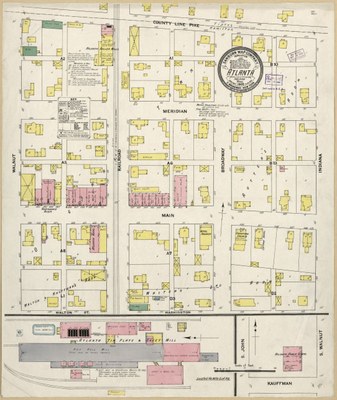
Plan your visit
Using Primary Sources Creatively
May 2, 2014

Being a historian is often like being a detective. Rarely do you find that perfect source that tells you everything you need to know. Although, finding that magical diary entry or newspaper article does happen on occasion, causing moments of celebration only acceptable in the deepest recesses of nerd-dom. More typical, one has to get creative with how they use their primary sources.
Primary sources can best be defined as those documents or objects created during the time period being studied. These sources can range from poetry to music to letters. Most of my research involves paper-based items. You might be wondering, How in the world can I use a primary source creatively? Do the words primary source and creative even go together?” Believe you me, they do. Here are just a few example of how I stretch my sources to get the most out of them that I can.
You Are There exhibits, hereon referred to as YAT or YATs, are birthed from a photograph. It only makes sense that I would use photographs and other images for research. From the YAT photo itself, as well as related photos, I can glean architecture, prop and costume information.
Recently, I have been using city directories for many aspects of the YAT research. For You Are There 1913: A City Under Water, I used the 1913 Indianapolis city directory extensively. While the address section of the directory was helpful, I learned much more from the front section on city government positions, clubs and fraternities, church locations, etc. Like many Polk and Company city directories, the 1913 edition lists all of the business names and locations by category in the back of the book. The front matter informational section and business directory both helped me to plot out various characteristics of the neighborhoods in West Indianapolis, the section of town greatest affected by the 1913 flood. I also gathered character ideas from these listings.
The Sanborn Fire Insurance Company created maps of business districts and residential neighborhoods in cities across the United States to access the value of properties in the case of a fire. These maps are a favorite primary source of mine, so I try to use them while researching all of our YATs. These maps are covered with colors and symbols that indicate every aspect of a building or home, from windows to sprinkler systems to stone storefronts. I also like to use Sanborn maps to see the concentration of stores and warehouses in business districts. For You Are There 1904: Picture This, I used Fort Wayne Sanborn maps to figure out where other photography studios were located in relation to Charles Miner?s studio on West Wayne Street. I also found the businesses and homes of many of the other characters portrayed in the exhibit space. These maps help me and the YAT interpreters understand the spatial context of the scenes we recreate.
Historical research has its limitations. There are certain questions about the past that we may never be able to answer, which is precisely why historians and the casual researcher alike must understand their sources. What can I glean from this Civil War letter? What are its limits? Allowing yourself to think outside the box about the research materials will open up a world of possibilities. Most importantly, playing detective is fun.
Research on, friends.
____________________








